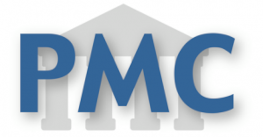Dokumentdetails
ID
oai:pubmedcentral.nih.gov:1003...
Thema
Research ArticlesAutor
Ferrante, Oscar Zhigalov, Alexander Hickey, Clayton Jensen, OleLangue
enEditor
Society for Neuroscience
Kategorie
The Journal of Neuroscience
Jahr
2023
Auflistungsdatum
27.09.2023
Schlüsselwörter
called locations band alpha distractor statistical learning cortex mechanisms neuralZusammenfassung
Visual attention is highly influenced by past experiences.
Recent behavioral research has shown that expectations about the spatial location of distractors within a search array are implicitly learned, with expected distractors becoming less interfering.
Little is known about the neural mechanism supporting this form of statistical learning.
Here, we used magnetoencephalography (MEG) to measure human brain activity to test whether proactive mechanisms are involved in the statistical learning of distractor locations.
Specifically, we used a new technique called rapid invisible frequency tagging (RIFT) to assess neural excitability in early visual cortex during statistical learning of distractor suppression while concurrently investigating the modulation of posterior alpha band activity (8–12 Hz).
Male and female human participants performed a visual search task in which a target was occasionally presented alongside a color-singleton distractor.
Unbeknown to the participants, the distracting stimuli were presented with different probabilities across the two hemifields.
RIFT analysis showed that early visual cortex exhibited reduced neural excitability in the prestimulus interval at retinotopic locations associated with higher distractor probabilities.
In contrast, we did not find any evidence of expectation-driven distractor suppression in alpha band activity.
These findings indicate that proactive mechanisms of attention are involved in predictive distractor suppression and that these mechanisms are associated with altered neural excitability in early visual cortex.
Moreover, our findings indicate that RIFT and alpha band activity might subtend different and possibly independent attentional mechanisms.
SIGNIFICANCE STATEMENT What we experienced in the past affects how we perceive the external world in the future.
For example, an annoying flashing light might be better ignored if we know in advance where it usually appears.
This ability of extracting regularities from the environment is called statistical learning.
In this study, we explore the neuronal mechanisms allowing the attentional system to overlook items that are unequivocally distracting based on their spatial distribution.
By recording brain activity using MEG while probing neural excitability with a novel technique called RIFT, we show that the neuronal excitability in early visual cortex is reduced in advance of stimulus presentation for locations where distracting items are more likely to occur.
Ferrante, Oscar,Zhigalov, Alexander,Hickey, Clayton,Jensen, Ole, 2023, Statistical Learning of Distractor Suppression Downregulates Prestimulus Neural Excitability in Early Visual Cortex, Society for Neuroscience

Projection-Specific Heterogeneity of the Axon Initial Segment of Pyramidal Neurons in the Prelimbic Cortex
heterogeneity projection-specific

